Text
RUBELLA (German Measles) & PREGNANCY

Dr. Deboshree Sarkar
Fellow Infertility Specialist
Dr. Deepak Goenka
Director, Institute of Human Reproduction
IVF Specialist
What is Rubella (German Measles)?
It is a contagious viral infection. If a pregnant woman acquires Rubella, she is at increased risk of miscarriages, stillborn and their developing babies are at risk for severe birth defects with devastating lifelong consequences. But the good thing about it is that once someone is infected or immunized, they acquire lifelong immunity. Many get this infection without even realizing it and develop immunity naturally.
Every woman before planning pregnancy should check their immunity by doing blood tests (IgG, IgM). If no immunity (i.e. IgG- negative) then they should be vaccinated against Rubella.
How Rubella spreads? What causes Rubella?
It can spread when an infected person coughs or sneezes (by direct contact with infected mucous from nose & throat).
During pregnancy, it can be passed from the mother to the unborn child through the bloodstream.
To read more, Click Here
Consult the best IVF Experts click here — Best IVF center in Guwahati, Best IVF center in Kolkata
#3 Day Measles#Five Day Measles#German Measles#German Measles In Hindi#Measles#Measle Symptoms#Measles Animation#Measles Explanation#Measles Rash#Measles Rubella#Measles Usmle#Measles Vaccine#Measles Vs German Measles#Prevention And Control Of German Measles#Rubella And 3 Day Measles#Rubella And German Measles#Rubella Measles#Rubella Or German Measles#Three Day Measles#Three-Day Measles#What Is German Measles
0 notes
Text
What Is Uterine Synechiae? Causes, Symptoms, Diagnosis & Treatment

Dr. Deboshree Sarkar
Fellow Infertility Specialist
Institute Of Human Reproduction (IHR)
Uterine Synechiae is an acquired uterine condition that occurs when scar tissue forms inside the uterus where the walls of the uterus stick to one another.
What causes Uterine Synechiae?
Trauma to the inner lining of the uterus causes subsequent scarring resulting in adhesion.
D&C(cleaning of the uterus) is performed after abortion and delivery.
Infection -Endometritis, Tuberculosis

Symptoms of Uterine Synechiae
Menstrual irregularities-there is little bleeding, infrequent bleeding, and absence of bleeding.
Painful menstruation
Inability to conceive
Pregnancy loss
To read more, Click Here
Consult the best IVF Experts click here — Best IVF center in Guwahati, Best IVF center in Kolkata
0 notes
Text
Triple Test: A Prenatal Screening For Chromosomal Abnormalities And Birth Defects

Dr. Deepak Goenka, M.D
Director, Institute of Human Reproduction
IVF Specialist
Pregnancy is an exciting time for expectant parents, but it is also a time of uncertainty and anxiety. To ease this uncertainty, many expectant mothers choose to undergo prenatal screening tests to check for any abnormalities in the fetus. One such test is the Triple Test. In this blog, we will take a closer look at the Triple Test and what it entails.
What is the Triple Test? When is it done?
The Triple Test is a prenatal screening test that is typically performed between the 15th and 20th weeks of pregnancy. The test is used to screen for certain chromosomal abnormalities and birth defects in the fetus. The Triple Test involves measuring three substances in the mother’s blood: alpha-fetoprotein (AFP), human chorionic gonadotropin (HCG), and estriol (µE3).
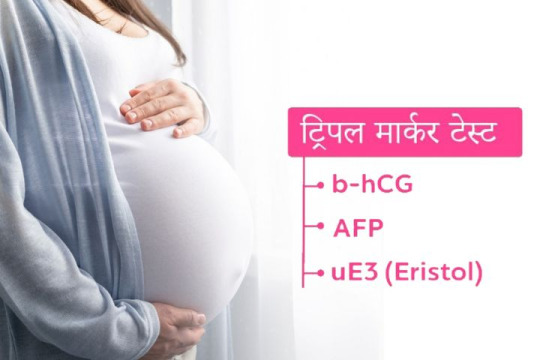
Why is the Triple Test performed? Triple Test as a screening technique for Down Syndrome.
A positive Triple Test result means that the levels of one or more of these substances are higher or lower than normal, which can be a sign of a chromosomal abnormality or birth defect. It is important to note that a positive Triple Test does not diagnose a specific condition, but rather indicates the need for further testing to confirm a diagnosis.
What happens after a positive Triple Test result?
If you receive a positive Triple Test result, your healthcare provider will likely recommend further testing, such as an amniocentesis. The procedure involves taking a sample of the amniotic fluid to test for chromosomal abnormalities or genetic disorders. It is important to understand that the test is not without risks, and you should discuss the risks and benefits with your healthcare provider before deciding to have them.
To read more, Click Here
Consult the best IVF Experts click here — Best IVF center in Guwahati, Best IVF center in Kolkata
#chromosomal abnormalities#first trimester screening#non-invasive prenatal screening#prenatal genetic testing#prenatal screening#prenatal screening tests#prenatal testing#triple screening
0 notes
Text
Understanding Amniocentesis Test: Risks, Results, And Benefits

Dr. Deepak Goenka, M.D
Director, Institute of Human Reproduction
IVF Specialist
What is Amniocentesis Test?
The amniocentesis test is a prenatal diagnostic test (test done during pregnancy) that involves taking a sample of the amniotic fluid surrounding the fetus in the uterus during pregnancy. It is typically performed during the second trimester, between 15 and 20 weeks of pregnancy.
What is Amniocentesis Test for? Why is it done?
Amniocentesis is usually done to check for chromosomal abnormalities or genetic disorders in the fetus, such as Down syndrome or Thalassemia.
The procedure of the Amniocentesis Test
The procedure for amniocentesis is typically performed in a hospital or clinic by a trained healthcare provider. It is done with the use of ultrasound to guide the insertion of a thin needle through the abdomen and into the uterus to collect a small sample of amniotic fluid. Usually, no prior preparations are required. No empty stomach. No anesthesia is usually used as it is just a needle prick. The procedure takes about 5-10 minutes. Post-procedure, you are asked to rest in the clinic for a few hours and then you can go home. This is an outpatient procedure and does not require admission.
To read more, Click Here
Consult the best IVF Experts click here — Best IVF center in Guwahati, Best IVF center in Kolkata
#amniocentesis#Amniocentesis Benefits#Amniocentesis Procedure#Amniocentesis Results#Amniocentesis Risks#Amniocentesis Test#Amniocentesis Test Benefits#Amniocentesis Test Procedure#Amniocentesis Test Risk Factors#Amniocentesis Test Side Effects#Amniocentesis Testing#Candidate For Amniocentesis#Is An Amniocentesis Painful#What Is Amniocentesis#Why Is Amniocentesis Test Done#Why Is An Amniocentesis Needed
0 notes
Text
What Is Azoospermia And How Is It Treated?

Dr. Deepak Goenka, M.D
Director, Institute of Human Reproduction
IVF Specialist
What is Azoospermia?
Azoospermia is a condition in which a man has no sperm in his ejaculate. This can be caused by various factors, including physical abnormalities, hormonal imbalances, and infections. While azoospermia can be distressing for men and their partners who are trying to conceive, it is important to note that it is treatable and there are options available for those seeking to have a child.
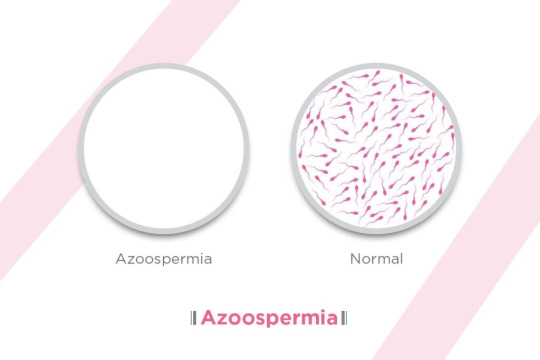
Types of Azoospermia:
There are two main types of azoospermia:
Obstructive Azoospermia
Non-obstructive Azoospermia.
To read more, Click Here
Consult the best IVF Experts click here — Best IVF center in Guwahati, Best IVF center in Kolkata
#azoospermia#azoospermia causes#azoospermia symptoms#azoospermia treatment#azoospermia treatment naturally#causes of azoospermia#is it possible to cure azoospermia naturally#non obstructive azoospermia#what is azoospermia
0 notes
Text
10 Measures for Successful Breastfeeding

Dr. Nirmal Jain
Paediatrics Specialist
Institute of Human Reproduction
It is important that while discharging a nursing mother from hospital 0r 1st contact of nursing mother in OPD the following measures to be explained to the mother for successful breast feeding:
Only mother’s milk up to six month of age.
Up to to six month of age, no artificial milk, non water, gripe water, janamghuti, honey, tulsi to be given to the baby.
Sometimes you may wonder whether your milk is sufficient or not for the baby. You should not worry if baby is passing urine six or seven times a day. It may be less than 6 times in the first 7 days.
To read more, Click Here
Consult the best IVF Experts click here — Best IVF center in Guwahati, Best IVF center in Kolkata
#10 Tips And Hacks For Breastfeeding#10 Tips And Hacks On Breastfeeding#Advice Breastfeeding#Breastfeeding#Breastfeeding Benefits#Breastfeeding Best Practices#Breastfeeding Goals#Breastfeeding Policy#Breastfeeding Practices#Breastfeeding Support#Breastfeeding Tips#Breastfeeding Training#How To Breastfeed Successfully#Successful Breastfeeding#Ten Steps To Successful Breastfeeding#Tips For Breastfeeding
0 notes
Text
Premenstrual Syndrome (PMS) – Causes, Symptoms, Diagnosis & Treatment

Dr. N. Romita Devi
Fellow Infertility Specialist
Dr. Deepak Goenka
Director, Institute of Human Reproduction
IVF Specialist
What is Premenstrual Syndrome (PMS)?
PMS stands for Premenstrual Syndrome. The physical or mood changes a woman goes through every month before menstruation which affects a woman’s normal life is called premenstrual syndrome (PMS). PMS has been reported in 30-40% of the reproductive female population.
What changes do we notice in PMS?
During PMS, a woman may undergo emotional changes such as:
Depression
Angry outbursts
Irritability
Crying spells
Anxiety
Confusion
Social withdrawal
Poor concentration
Insomnia
Increased nap-taking
Changes in sexual desire.
To read more, Click Here
Consult the best IVF Experts click here — Best IVF center in Guwahati, Best IVF center in Kolkata
#Causes Of Premenstrual Syndrome#Home Remedies For Premenstrual Syndrome#Pre-Menstrual Syndrome#Premenstrual#Premenstrual Dysphoric Disorder#Premenstrual Symptoms#Premenstrual Syndrome#Premenstrual Syndrome (Disease Or Medical Condition)#Premenstrual Syndrome Anxiety#Premenstrual Syndrome Hindi#Premenstrual Syndrome Signs And Symptoms#Premenstrual Syndrome Symptoms#Premenstrual Syndrome Treatment#What Is Premenstrual Syndrome - Signs & Symptoms
0 notes
Text
Common problems faced during the first trimester of Pregnancy

Dr. Swati Jalan
Obstetrician & Gynaecologist
Institute of Human Reproduction
First-trimester bleeding can be concerning. Spotting and light bleeding, however, are typically merely expected symptoms of early pregnancy. There are several causes of mild bleeding and spotting in the first trimester that are often safe for both you and your unborn child.
COMMON CAUSES OF VAGINAL BLEEDING
Implantation bleeding:
This happens about 6 to 12 days after you’ve conceived. The fertilized egg floats into its new home and must attach itself to the uterine lining to get oxygen and nutrition.
This settling in can cause light spotting or bleeding. Implantation bleeding usually happens just before you expect your period to begin. In fact, this kind of bleeding is often mistaken for a light period.
Cervical polyp
About 2 to 5 percent of women have polyps – small, finger-like growths on the cervix, which get inflamed or irritated and lead to bright red bleeding.
To read more, Click Here
Consult the best IVF Experts click here — Best IVF center in Guwahati, Best IVF center in Kolkata
#Constipation During Pregnancy#First Trimester#First Trimester Of Pregnancy In English#First Trimester Pregnancy#First Trimester Pregnancy Development#Precautions During First Trimester Of Pregnancy#Precautions During The First Trimester#Pregnancy#Trimester Of Pregnancy#Trimesters Of Pregnancy Weeks
0 notes
Text
How does smoking affect Men’s Fertility?

Dr. Saurav Maheshwari
INFERTILITY SPECIALIST
Institute of Human Reproduction
The Impact of smoking on the general health and well-being of an individual and its association with various life-threatening cancers are known to all. Many of us are not aware of smoking can affect our fertility. As per the latest data, almost 27 cr. Indians consume tobacco which is out of every 5 Indians
It has been seen that smoking affects almost every system involving the reproductive process in men. Smoking can also affect you at the genetic level. Several studies have shown a decrease in sperm quality as well as quality as seen by a decrease in semen volume, sperm counts, and sperm motility. Another major impact of smoking is the generation of ROS (reactive oxygen species), which increases oxidative stress on the tiny swimmers.
To know more about how Smoking affects Male fertility, Watch the video below by Dr. Saurav Maheshwari
Remember that the best time to quit smoking was the day you started and the second best time is today.
youtube
If you are facing any kind of Male infertility, feel free to consult our experts.
To know more, visit www.ihrindia.com
Consult the best IVF Experts click here — Best IVF center in Guwahati, Best IVF center in Kolkata
#Causes Of Male Infertility#Effect Of Smoking On Pregnancy#Effect Of Smoking On Sperm#FERTILITY#Harmful Effects Of Smoking On Fertility#How Does Smoking And Alcohol Effects On Fertility#Infertility#Infertility Causes#Infertility In Men#Infertility Treatment#Male Fertility#Male Infertility#Smoking And Fertility#Smoking And Infertility#Smoking And Male Fertility#Smoking And Male Infertility#Smoking Causes Infertility#Smoking Effects On Fertility
1 note
·
View note
Text
The World’s first IVF Baby – A Medical Marvel | IHR’s contribution in the field of ART

Dr. Deepak Goenka
Director, Institute of Human Reproduction
IVF Specialist
IVF is a process in which embryos are formed by mixing sperm and oocyte outside the human body and transferring those fertilized embryos inside the woman’s uterus. Today, IVF has become the mainstream medical treatment for infertility. Hundreds and thousands of children are conceiving through this procedure every day.
Introduction – the World’s first IVF Baby
Louise Brown was the result of the first successful IVF, which is considered to be among the most remarkable medical breakthrough of the 20th century. She was born on 25th July 1978 at Oldham and District General Hospital, Manchester, England. She was born to the lucky parents Lesley and Peter Brown at 11:47 pm, Tuesday by caesarean section and weighed 5 pounds, 12 ounces (2.608 kg) at birth.
It was the hard work of gynaecologist Patrick Steptoe and physiologist Robert Edward who made this miracle happen. As the birth of Louise Brown brought joy to the whole world, they added joy in between her name and named her Louise Joy Brown.
The Struggle Story
Lesley and Peter were from a small city Bristol. Peter Brown worked as a driver for British Rail. He has two daughters from a previous marriage Beverly and Sharo.
Before giving birth to Louise, Lesley Brown had suffered nine years of infertility due to blocked tubes. Bristol clinician, Dr Rosalin Hinton explained to the couple that some experimental IVF procedure was going on in Manchester but the chance of success is one in a million. They were so desperate for a child that they travelled 180 miles from Bristol to Manchester and met with pioneers Dr. Patrick Steptoe and Robert Edward in 1976.
To read more, Click Here
Consult the best IVF Experts click here — Best IVF center in Guwahati, Best IVF center in Kolkata
#1st Ivf Baby#Baby#First Baby#First Baby Born With Assist From Stem Cells#First Ivf#First Ivf Baby#First Test Tube Baby#First Test Tube Baby In The World#First Test Tube Baby Louise Brown#India's First Ivf#Louise Brown First Test Tube Baby#Louise Brown Test Tube Baby#Louise Joy Brown Test Tube Baby#Test Tube Baby#Usa First Ivf Baby#Who Was The First Ivf#World Ivf Day#World's First Ivf Baby#World's First Test Tube Baby
0 notes
Text
Health and Child Development | Why Is Healthy Child development Important?

Dr. Ranjit Agarwala
Paediatrics Specialist
Institute of Human Reproduction
It is a dream for every couple to have a child after marriage. In our present scenario, every child is a precious child. Every parent wants to raise a healthy, intelligent, and capable child with good values.
The early years of life are very important to know about Health and Child Development. Healthy development means that children can grow up where their social, emotional, and educational needs are met along with normal physical growth. Having a safe, loving home and spending time with family- playing, singing, reading, and talking are very important, especially in this era of the digital world. Proper nutrition, exercise, and sleep also can make a big difference.
How does health status affect child development and behavior ?
Starting at birth and continuing throughout childhood, children reach milestones in how they play, learn, speak, act and move. Skills such as taking the first step, smiling for the first time, and waving “bye-bye” are called child development milestones. Children develop at their own pace, so it can be difficult to tell exactly when a child will learn a given skill.
To read more, Click Here
Consult the best IVF Experts click here — Best IVF center in Guwahati,
Best IVF center in Kolkata
#5 Stages Of Child Development#Baby Developmental Milestones#Baby Milestones#Baby Milestones Motor Development#Brain Development#Child Development#Child Development And Learning#Child Development Stages#Child Trauma#Developmental Milestones#Fine Motor Skill Development#Gross Motor Skill Development#How To Improve Fine Motor Skills#Movement Foundations#Transitional Milestones#What Are Developmental Milestones#What Are The 5 Stages Of Child Development
0 notes
Text
Hysterosalpingogram (HSG Test) Procedure: What To Expect?

Dr. Tanya Das
Fellow Infertility Specialist
Institute of Human Reproduction
What is an HSG Test?
Hysterosalpingography (HSG) is an important female fertility test. HSG test is an X-ray procedure that is used to view the inside of the uterus and the fallopian tubes. HSG was first performed by Rind Fleisch in 1910 and was considered to be the first special radiology procedure of that time.
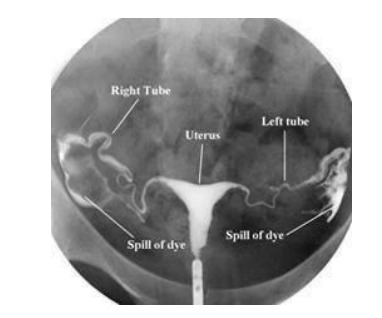
Why is HSG Test Done? What are the benefits of an HSG Test?
An HSG gives information regarding the structural anatomy of the uterus and fallopian tubes. HSG helps in the diagnosis of uterine anomalies such as congenital malformations, uterine synechiae, endometrial polyps, submucosal myomas, etc. It also helps in assessing the patency of fallopian tubes (tubal blockage) and also gives us an idea of various tubal pathologies.
Read more in Blog
Consult the best IVF Experts click here — best IVF center in Guwahati, best IVF center in Kolkata
#Does Hsg Hurt#HSGHsg Benefits#Hsg Experience#Hsg Full Form#Hsg Pain#Hsg Painful Or Not#Hsg Procedure#Hsg Risks#HSG Test#Hsg Test Procedure#Hsg What To Expect#Hsg X Ray#Infertility Hsg Test#Is Hsg Painful#Tips For Hsg#What Is Hsg Test#Why Do I Need Hsg#Will Hsg Hurt
0 notes
Text
UNOSSIFIED NASAL BONE / ABSENT NASAL BONE IN SCAN – WHAT DOES IT MEAN?

Dr. Zohra Ahmad
Fetal Medicine Specialist
Institute of Human Reproduction
The nasal bone is a paired bone forming the anterior wall of the nasal cavity and is largely responsible for the shape of the nose. The nasal bones are variable in size and form in different individuals. The first trimester scan is an important tool of risk assessment for fetal aneuploidies. The presence or absence of fetal nasal bone is an important secondary marker for risk allocation.
1. What is Unossified / Absent Nasal Bone?
It refers to a finding on ultrasound that nasal bone is not seen or appears small. It is due to delayed ossification of the nasal bone. In the report, it may be mentioned as either unossified, absent, or hypoplastic nasal bone. Unossified and absent nasal bone means that nasal bone is not seen while Hypoplastic nasal bone means nasal bone is seen but very small.
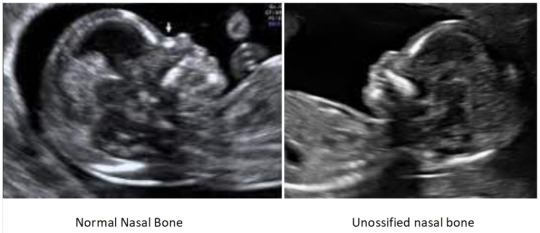
2. Causes of Absent Nasal Bone
It can be due to hypoplasia or delayed ossification of the nasal bone. It can be due to underlying chromosomal abnormality or in 1-2% of normal babies as well.
3. How Common Is Absent Nasal Bone?
It is found in 1-2% of normal babies. Studies have shown that in about 85-90% cases of the isolated absent nasal bone, babies will be normal. However, in about 10-12% of cases, babies may have chromosomal problems including down’s syndrome .
4. When can Unossified Nasal bone be detected?
Unossified nasal bone in the first trimester
It is generally detected in the first trimester that is 11-14 weeks in a special ultrasound scan called First trimester anomaly scan/ First trimester scan or NT/NB scan. It must be done by an expert radiologist or fetal medicine specialist with special training, using a high end ultrasound machine with baby in appropriate position.
Unossified nasal bone in second trimester/20 weeks scan or third trimester
Sometimes if the first trimester scan has not been done, unossified nasal bone can also be first detected later in the second or third trimester. The significance of absent nasal bone in different trimesters is the same.
To read more, Click Here
Consult the best IVF Experts click here —
Best IVF center in Guwahati, Best IVF center in Kolkata
#1st Trimester Scan#Absent Nasal Bone#amniocentesis#Hypoplastic Nasal Bone#Unossified Nasal Bone#First Trimester Scan
0 notes
Text
A 26 year old woman’s Success Story of becoming a mother after 4 Consecutive abortions – Diagnosed with Sub Septate Uterus

Dr. Dhiren Dutta
IVF SPECIALIST
Female patient, Mrs. X was 26 years old and had been married for 5 years. After longing for a child they finally decided to go to an infertility clinic in Guwahati near their home and was diagnosed with Sub Septate Uterus. Read the whole article for the treatment process.
Past history of Female Patient X
A sweet couple from Karimganj district of Assam visited us, IHR with their extreme agony. Mrs. X, just 26 years of age has ben married for last 5 years and in these last 5 years the couple was mentally shattered like anything.
She conceived four times in last five years, but three of these pregnancies got aborted when they crossed 12 weeks (3 months) and somehow, one pregnancy crossed 20 weeks (five months) and got aborted in the sixth month. They left no stone unturned to get a baby, but in vain.
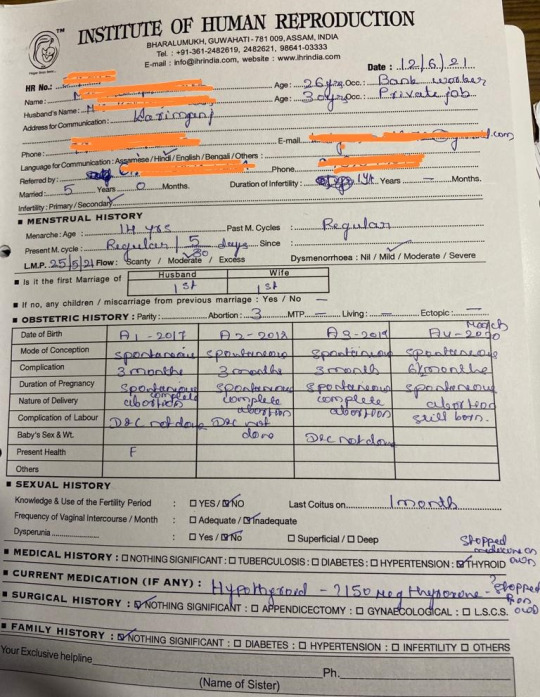
Diagnosis – Sub Septate Uterus
The couple approached IHR for consultation. When the couple came for a discussion, we tried to find out all the possible reasons of the last four abortions.

In the 3D Sonography and H.S.G (hysterosalpingography) examinations, she was diagnosed with Sub Septate uterus and we found a broad based septum, inside the uterine cavity which was reducing the space inside the uterine cavity for the growing baby.
We discussed and educated the couple what was the problem for their agony, and that it needs a correction via Hysteroscopy.

Treatment
Hysteroscopic Guided Septum Resection was done with Sciesors successfully and they were sent back home with instructions to try for pregnancy naturally.

And finally, God has blessed the couple with a cute little angel. Thank you God, for choosing us as a mediator to bring happiness in their life.

Consult the best IVF Experts click here — best IVF center in Guwahati, best IVF center in Kolkata
#Cause Of Early Miscarriage#Complete Septum#Ivf With Septum#Miscarriage Education#Pregnancy On Septum Uterus#Septate Uterus#Successful Pregnancy#Uterine Septum#Uterine Septum Surgery#Uterine Septum Symptoms & Pregnancy#Uterine Septum Treatment#Uterus Septum Pregnancy
0 notes
Text
The causes of Infertility and how to manage

Dr. Kanchan Murarka
IVF Specialist
Institute of Human Reproduction
Its is a common misconception that Infertility is mostly a female issue. Infertility impacts men and women equally. Among all couples seeking help for infertility, about half of them have male factor issues. In this Video, Dr. Kanchan Murarka (IVF consultant, IHR Guwahati) talks about infertility, the cause of Infertility, and how to manage it.
📺 Watch the video to know more about it.
https://youtu.be/j42OkLykFpA
To Consult with our Infertility and IVF Experts please visit our website:
Click here 👉 Best IVF centre in Guwahati
#infertility#fertility#infertility treatment#fertility treatment#infertility causes#causes of infertility#infertility tips
0 notes
Text
Comprehensive Paediatric Care Under one Roof | IHR Guwahati

The Department of Paediatrics at IHR Guwahati is committed to providing “State-of-the-art” care to children with various clinical conditions. These services are provided by a dedicated team of experienced and trained clinicians and specialists in several fields who work together to provide comprehensive paediatric care under one roof.
📺 Watch the video to know more about it.
https://youtu.be/NziGYPtIl8s
To Consult with our Infertility and IVF Experts please visit our website:
Click here 👉 Best IVF centre in Guwahati|
#Baby Care#Best Pediatric Doctor In Guwahati#Child Health#Guwahati#Neonatal Care#Pediatric Care#Pediatrician In Guwahati
0 notes
Text
Ovarian Rejuvenation with PRP (Platelet Rich Plasma)

With the global modernization, women tried to delay their childbearing due to professional commitments and seeking better living conditions. During last 3-4 decades there is significant rise in the mean age of first time mothers, ranging between third and fourth decade. This is associated with ovarian aging, characterized by declining oocyte quantity and quality which is an unresolved problem.
Women with poor ovarian reserve or those with ovarian failure with low AMH had only one option to conceive that is Test Tube baby (IVF) with donor eggs. IHR has developed a program where those patients with very low AMH / Poor ovarian reserve can have a chance to conceive with their own eggs. This program consists of:
Yoga
Nutritional Therapy
Ovarian Rejuvenation with PRP
IHR is one of the oldest Fertility Center in India, providing PRP therapy for management of Poor Ovarian Reserve.
What is PRP?
Our blood is made of solid part (cells) and liquid part (plasma). There are mainly three types of cells in blood: RBC, WBC and platelets. RBC and WBC are removed from the blood by specially designed equipments and remaining platelets are highly concentrated (8 – 10 times of normal) in plasma which is called Platelet Rich Plasma or PRP.
How PRP works:
Platelets have many growth factors. Growth factor’s primary role is to trigger cell division and is responsible for formation of new cells; growth of tissues, and most importantly wound healing. This wound healing capability of PRP has been used for many years to accelerate healing in sports injuries. PRP is also used in regeneration of hairs. The same way PRP injected directly in to ovary can stimulate the endogenous stem cells in ovary to regenerate egg – precursor cells and rejuvenate the ovary.
Is PRP therapy effective for rejuvenation of ovaries?
PRP therapy has been used successfully worldwide and has helped women with premature ovarian insufficiency and menopause to give them an opportunity to have a child with their own eggs. Several children have been born following this procedure.
How the procedure is performed:
The procedure is simple and is done in two steps.
Preparation of PRP:
PRP infusion in ovaries:
PRP is extracted using a specially designed centrifuge machine at a temperature of 16°C in special conical tubes.
The patient is given oxygen 5 liters per minute for 5minutes to get better quality of plasma and platelets. While oxygen is going on, about 30 to 40 ml of blood is taken from the patient in pre-cooled (at 16°C) tubes containing special anticoagulants.
The tubes are centrifuged at 16°C. Blood separates in three layers. The lower part contains RBC & WBC and the upper layer with Platelets and plasma is removed and processed again to get almost 8–10 times the concentration of platelets with growth factors. The whole procedure is to be done at 16°C to prevent premature activation of platelets. The prepared platelet solution (PRP) is to be used immediately.
Just before infusion in ovaries Platelets in PRP solution are activated by adding some chemicals to it. The infusion of PRP in ovaries is similar to Ovum Pick-Up (OPU) procedure during IVF. This is done under local anesthesia or IV anesthesia so that you do not feel any pain during the procedure. The whole procedure takes 2- 3 hours.

How PRP infusion is done?
Between the 2nd to 4th days of the menstrual cycle, the patient is called on an empty stomach at the clinic. Under mild IV anesthesia and USG guidance, a PRP sample is injected into both ovaries. The process takes 15 to 20 minutes. The patient can go home 1– 2 hrs after the procedure. The process is repeated every month for three months.
Who can go for the PRP therapy:
Premature Ovarian Failure (POF).
Women of advanced maternal age (menopausal and premenopausal women) – PRP therapy can help to grow more eggs, which may increase the chances for a positive result in the IVF cycle or for spontaneous pregnancy.
Recurrent failed IVF cycles due to poor quality of eggs
To Consult with our Infertility and IVF Experts please visit our website:
Click here 👉 Best IVF centre in Guwahati|
#platelet rich plasma#platelet rich plasma therapy#platelet-rich plasma#platelet rich plasma injections#platelet rich plasma facial#platelet rich plasma treatment#platelet#plasma#platelet rich plasma prp#platelet-rich plasma therapy
0 notes